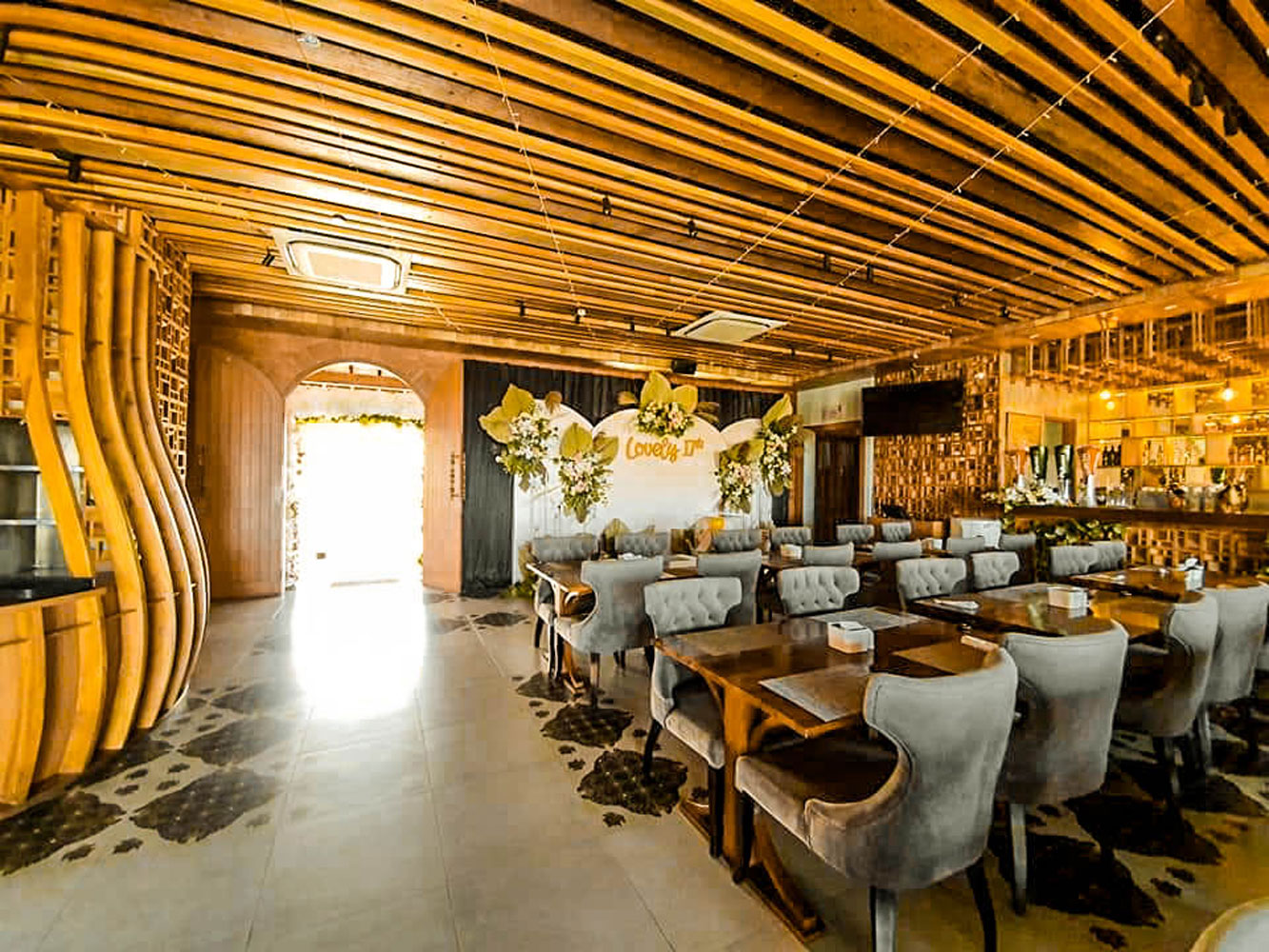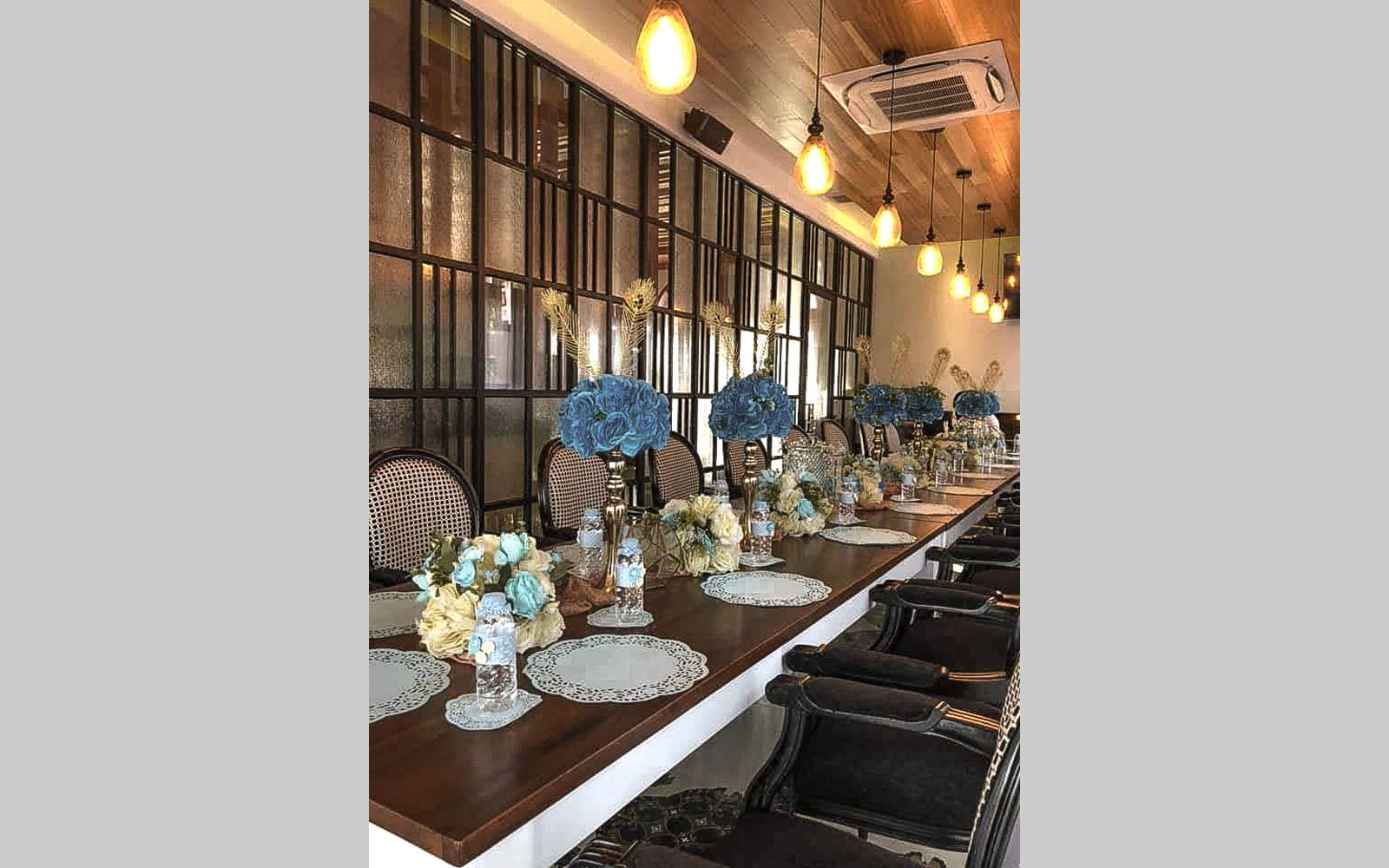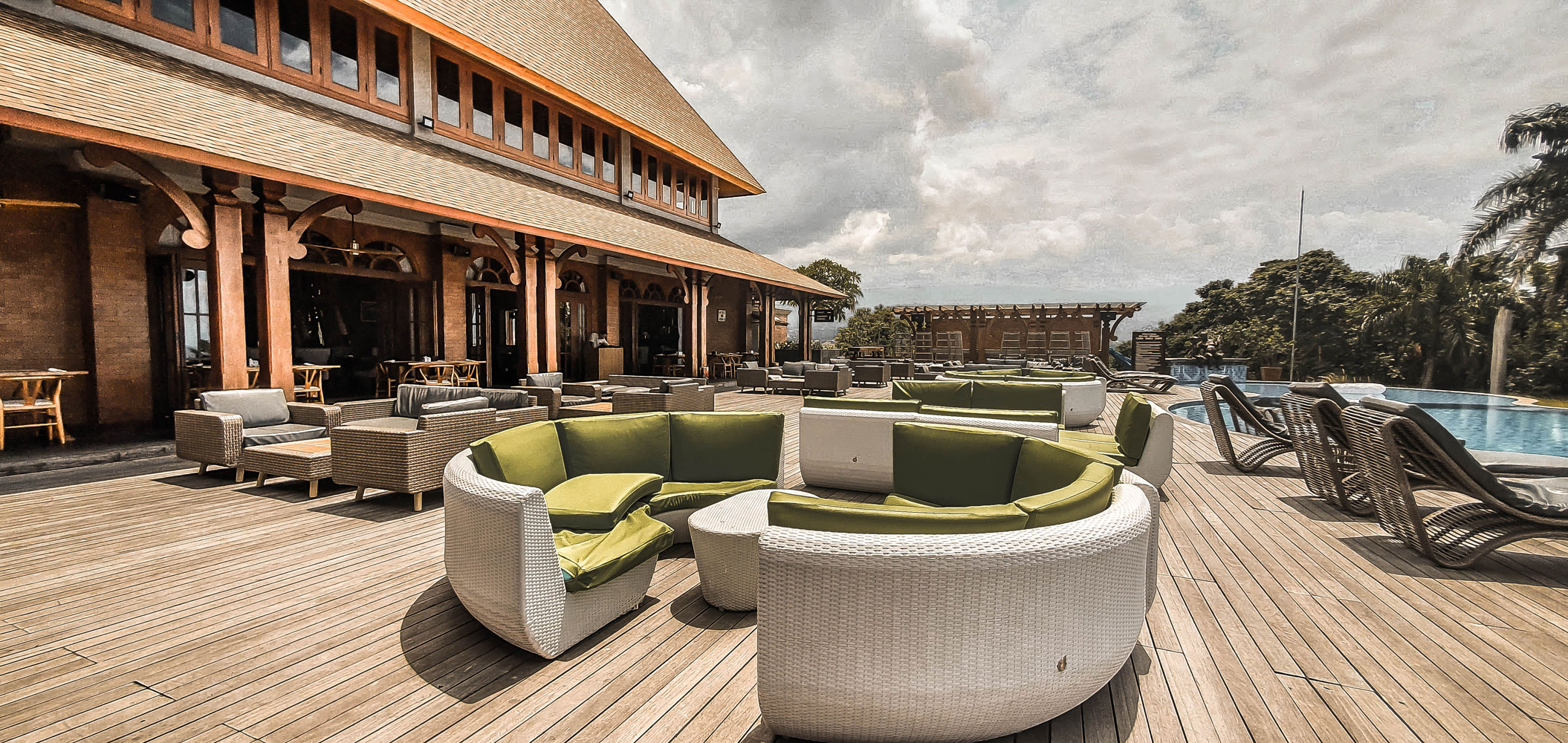
C A S A B A K U D U P A
PURPOSE :
RESTAURANT
|
AREA :
7,200 SQM
|
LOCATION :
MANADO, SULAWESI - INDONESIA
|
YEAR :
2016
The term "Manado" is mentioned by various names. The naming of Manado refers to similarities in names such as "manadu," or in different writings or words for the same location, or in the same meaning. The name "manadu" is found in Valentijn's writing (1724), which is mentioned on a sea chart created by Nicolaus Desliens in 1541 and a sea chart created by Laco in 1590. Valentijn's writing describes "manadu" as a location with a coral island off the coast in front of the city of Manado. Since 1862, the referred coral island has been called Pulau Manado Tua. The term "manadu" in pronunciation and pronunciation by Europeans regarding the coral island is related to the Tombulu language, with the word "mana-undou." This word means a person who comes from afar or a person from a distance.
Manado is the capital of North Sulawesi province, Indonesia. The city of Manado has 11 districts and 87 villages. Manado is located in Manado Bay, surrounded by mountainous areas, and its coastal area is reclaimed land.
With a population of 408,354 according to the 2010 Census, it is the second-largest city on the island of Sulawesi after Makassar. The estimated population of Manado (as of January 2014) was 430,790 people and increased to 478,192 people as of June 30, 2023, according to the Ministry of Home Affairs data for 2023, with a population density of 2,934 people/km2.
The traditional music of Manado and its surrounding areas is known as Kolintang music. The Kolintang musical instrument is made of various lengths of wood to produce different tones. Typically, several Kolintang instruments are needed to play a song, creating a harmonious combination of sounds.
Generally, life in Manado is similar to other major cities in Indonesia. The city center is located on Sam Ratulangi Street, where shopping centers have been built along the north-south route, also known for famous restaurants in Manado. Recently, Manado is known for the proliferation of malls and restaurants built along the coast, taking advantage of the beautiful sunset view. This is one of the projects by Jeghier Architect, commissioned by the client to create a comfortable, tropical modern-styled restaurant selling Manado's typical seafood.
As we are discussing restaurant design at the moment, we will provide some insight into the food in Manado. Another famous dish from Manado is nasi kuning, with a different taste and presentation as it is sprinkled with smoked skipjack tuna (cakalang) floss and served in a package using palm leaves. Additionally, there is grilled red snapper fish head. Dabu-dabu is a popular Manado chili sauce, made from a mixture of red chili peppers, bird's eye chili peppers, sliced shallots, and diced fresh tomatoes, with added soy sauce.
For snacks, Manado has a unique type of pickled fruit called gohu and shaved ice dessert called es kacang. Gohu is made from slices of papaya soaked in a solution of vinegar, sugar, salt, ginger, and chili. There are also various cakes such as lalampa (lemper filled with smoked skipjack tuna wrapped in glutinous rice and banana leaves, then grilled), panada (a type of fried bread filled with smoked skipjack tuna, shaped with twisted edges), cucur, apang, klapertaart Manado, kolombeng, panekuk (pancake), dodol Manado, kueku (a type of onbijt koek), pinende, biapong (a type of bakpao) with pork filling, sesame seeds, "unti" (made from grated coconut mixed with palm sugar), pia (a large-sized bakpia), and nasi jaha, which is made from glutinous rice mixed with coconut milk, ginger, shallots, etc., then put into bamboo tubes and grilled.
All of these delicacies can be found at the Casa Bakudapa restaurant. We hope that one day you can visit the city of Manado and witness the architectural beauty of this restaurant. Until then, farewell...
Manado is the capital of North Sulawesi province, Indonesia. The city of Manado has 11 districts and 87 villages. Manado is located in Manado Bay, surrounded by mountainous areas, and its coastal area is reclaimed land.
With a population of 408,354 according to the 2010 Census, it is the second-largest city on the island of Sulawesi after Makassar. The estimated population of Manado (as of January 2014) was 430,790 people and increased to 478,192 people as of June 30, 2023, according to the Ministry of Home Affairs data for 2023, with a population density of 2,934 people/km2.
The traditional music of Manado and its surrounding areas is known as Kolintang music. The Kolintang musical instrument is made of various lengths of wood to produce different tones. Typically, several Kolintang instruments are needed to play a song, creating a harmonious combination of sounds.
Generally, life in Manado is similar to other major cities in Indonesia. The city center is located on Sam Ratulangi Street, where shopping centers have been built along the north-south route, also known for famous restaurants in Manado. Recently, Manado is known for the proliferation of malls and restaurants built along the coast, taking advantage of the beautiful sunset view. This is one of the projects by Jeghier Architect, commissioned by the client to create a comfortable, tropical modern-styled restaurant selling Manado's typical seafood.
As we are discussing restaurant design at the moment, we will provide some insight into the food in Manado. Another famous dish from Manado is nasi kuning, with a different taste and presentation as it is sprinkled with smoked skipjack tuna (cakalang) floss and served in a package using palm leaves. Additionally, there is grilled red snapper fish head. Dabu-dabu is a popular Manado chili sauce, made from a mixture of red chili peppers, bird's eye chili peppers, sliced shallots, and diced fresh tomatoes, with added soy sauce.
For snacks, Manado has a unique type of pickled fruit called gohu and shaved ice dessert called es kacang. Gohu is made from slices of papaya soaked in a solution of vinegar, sugar, salt, ginger, and chili. There are also various cakes such as lalampa (lemper filled with smoked skipjack tuna wrapped in glutinous rice and banana leaves, then grilled), panada (a type of fried bread filled with smoked skipjack tuna, shaped with twisted edges), cucur, apang, klapertaart Manado, kolombeng, panekuk (pancake), dodol Manado, kueku (a type of onbijt koek), pinende, biapong (a type of bakpao) with pork filling, sesame seeds, "unti" (made from grated coconut mixed with palm sugar), pia (a large-sized bakpia), and nasi jaha, which is made from glutinous rice mixed with coconut milk, ginger, shallots, etc., then put into bamboo tubes and grilled.
All of these delicacies can be found at the Casa Bakudapa restaurant. We hope that one day you can visit the city of Manado and witness the architectural beauty of this restaurant. Until then, farewell...






